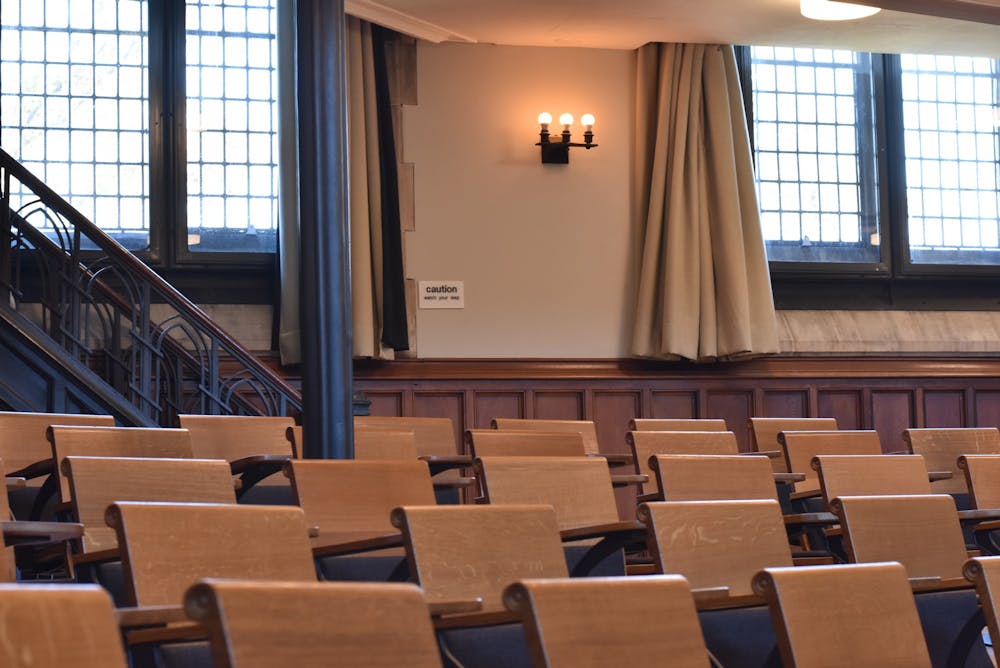During the first two weeks of every Princeton semester, students have the opportunity to toy with their schedules freely. Over this period, referred to as add/drop, students are afforded flexibility in changing the schedule they created during course registration by adding or dropping any number of courses. Many students take great advantage of this, as initial schedules are often only reflective of whatever classes are still open during registration. After the add/drop period, as per the Office of the Registrar, students can no longer add courses and will incur a $45 fee for each course dropped. The reality of add/drop does not always allow students the opportunity to optimize their schedules, which is why I am calling on the University to reform and restructure this two week period, as well as drop the inequitable $45 fee.
The main problem with the current form of add/drop is that most instructors begin assigning coursework and assignments during the first or second week. The purpose of add/drop is to have the entire two-week period to revise and develop your schedule, but when coursework enters the equation, students may avoid switching courses because of having to deal with a backlog of work. I know that I am not alone in avoiding fully exploring course options because by adding a new class during add/drop, I would be entering a couple steps behind. My concerns were expressed by Senior Columnist Ava Milberg in a 2021 piece, where she noted how difficult it is to fully catch up after falling behind given how accelerated the Princeton academic calendar is. It is this accelerated nature of the Princeton semester that makes it all the more vital for students to actually be able to use add/drop in the way that it was intended.
It is understandable that professors want to be able to get started with their course content, but this has to be balanced with students’ needs to create optimal schedules. I propose that professors should only start assigning coursework during the second class meeting of the second week of add/drop. For classes that meet twice a week, this would allow a student to attend three class meetings before having to fully prepare for the class and complete assignments. Though faculty would need to modify their syllabi around this requirement, this change would greatly benefit Princeton students and allow for much more academic exploration during add/drop. This modification would translate into an improved classroom experience for students since they would still be able to get a sense of what the workload of the class feels like before the add/drop period is over. With the current nature of add/drop, it can feel like the semester starts on the wrong foot before it even begins.
Reforming add/drop is also a matter of equity. For First Generation Low Income (FGLI) Princetonians in particular, $45 may be a significant amount of money. Some FGLI students have likely already grappled with the financial burden they face when dropping a class past add/drop or the academic burden of staying in a class that is not a good fit for them. Restructuring the add/drop period should in itself reduce the amount of students who even have to drop a course past it, but FGLI students still should not have to incur a fee for dropping a course. Yet, one has to wonder why there is a fee for dropping a class in the first place. There is no transparency on the part of the University on where these fees are being directed, and it seems unfair to arbitrarily charge amounts without a rational basis behind it.
I spoke to Tope Alowonle ’25 about the challenges she faced during add/drop this semester. Alowonle, who plans to declare Sociology, was unable to get into two courses during course registration and most of the add/drop period due to both being full: SPI200: Statistics for Social Science and SPI350: The Environment: Science and Policy. After speaking to multiple administrators in the SPIA department, Alowonle was able to get into both. However, because of the current format of add/drop, where many professors begin assigning coursework during the first week, Alowonle started the semester with extensive work to catch up on. She described this experience as very “stressful,” believing that she “should just be able to experience the first week instead of having to worry about 350 pages of reading for one course, or 200 pages of reading for another course.” Alowonle’s struggles during add/drop illustrate the urgent need for reform.
Alowonle summed up add/drop’s importance: “The professor makes or breaks the course. The structure makes or breaks the course.” This is exactly why it is critical for all Princetonians to use add/drop as a time to understand a professor’s teaching style and course structure, see if it is compatible with their learning style, and then make a decision on whether to keep or drop the course. Yet, currently many students are deprived of this ability. If they are not spending most of add/drop simply trying to get into a class, they are being hit with multiple assignments that take up the time they are supposed to be using to finalize their schedule.
Alowonle concluded our conversation by stating, “If you are telling students that there is an add/drop period for two weeks, they should actually be able to experience it. I wasn’t able to experience it.” Princeton, let us truly experience add/drop.
Ndeye Thioubou is a sophomore from The Bronx, N.Y. She can be reached at nthioubou@princeton.edu.








